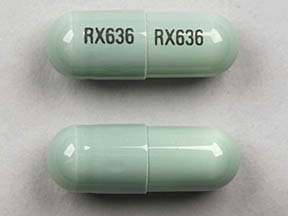Ganciclovir Disease Interactions
There are 3 disease interactions with ganciclovir.
Ganciclovir (applies to ganciclovir) bone marrow suppression
Major Potential Hazard, High plausibility. Applicable conditions: Bone Marrow Depression/Low Blood Counts
The use of ganciclovir is commonly associated with bone marrow toxicity. Neutropenia, anemia and thrombocytopenia have been reported. Therapy with ganciclovir should be administered cautiously in patients with preexisting blood dyscrasias or bone marrow suppression. Routine blood counts are recommended, and dosing adjusted or discontinued accordingly. Ganciclovir should not be used in patients with an absolute neutrophil count < 500/mcL or a platelet count < 25,000/mcL. Some neutropenic patients requiring ganciclovir may be candidates for granulocyte colony stimulating factor.
Ganciclovir (applies to ganciclovir) renal dysfunction
Major Potential Hazard, High plausibility.
Ganciclovir is primarily eliminated by the kidney. Patients with renal impairment may be at greater risk for toxicity from ganciclovir due to decreased drug clearance. Therapy with ganciclovir should be administered cautiously in these patients at reduced dosages. Serum creatinine values should be monitored frequently, and the dosing further adjusted or discontinued accordingly.
Ganciclovir (applies to ganciclovir) hemodialysis
Moderate Potential Hazard, High plausibility.
Ganciclovir is substantially removed by hemodialysis. Plasma levels of ganciclovir have been shown to reduce by 50% following hemodialysis. Ganciclovir should be administered on non-dialysis days or following dialysis sessions.
Switch to professional interaction data
Ganciclovir drug interactions
There are 277 drug interactions with ganciclovir.
Ganciclovir alcohol/food interactions
There is 1 alcohol/food interaction with ganciclovir.
More about ganciclovir
- ganciclovir consumer information
- Check interactions
- Compare alternatives
- Pricing & coupons
- Drug images
- Side effects
- Dosage information
- During pregnancy
- Drug class: purine nucleosides
- Breastfeeding
- En español
Related treatment guides
Drug Interaction Classification
| Highly clinically significant. Avoid combinations; the risk of the interaction outweighs the benefit. | |
| Moderately clinically significant. Usually avoid combinations; use it only under special circumstances. | |
| Minimally clinically significant. Minimize risk; assess risk and consider an alternative drug, take steps to circumvent the interaction risk and/or institute a monitoring plan. | |
| No interaction information available. |
See also:
Further information
Always consult your healthcare provider to ensure the information displayed on this page applies to your personal circumstances.


